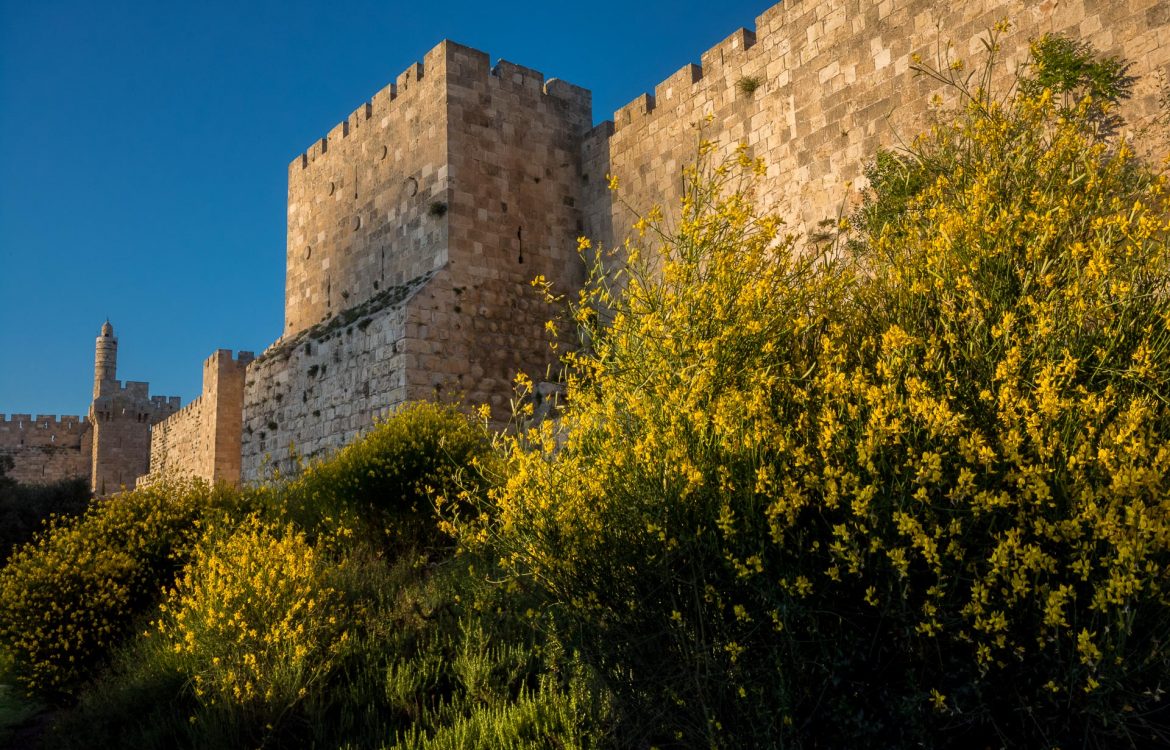
Just Another Day at Damascus Gate
Jerusalem’s Old City is one of the world’s most contentious patches of real estate. At just over 224 acres, it’s barely one-third the size of Central Park in NYC. And yet, this tiny spot of ground has no equal when it comes to influence on the course of western civilization.
That’s because the Old City of Jerusalem is embedded in the foundation stories of the world’s three great monotheistic religions: Judaism, Christianity and Islam. For Jews, it is the site of King David’s Temple, and later, Solomon’s Temple. For Christians, it’s where Jesus was crucified, buried and resurrected. For Muslims, Jerusalem is where Mohammed is said to have ascended to heaven. Indeed, the exact spot of the ascension is marked by Jerusalem’s most iconic and identifiable architectural landmark: the Dome of the Rock.
Over the course of its long history, Jerusalem has been destroyed and rebuilt at least twice, while changing hands 44 times. Such history inevitably results in cultural overlap, and the most consequential example of this is the Dome of the Rock. Built in 691 CE when Jerusalem was under Muslim rule, the Dome sits atop the most sacred site in all of Judaism: the ruins of the Second Temple, better known as the Temple Mount.
If you were looking for insight into how intractable the conflict between Israelis and Palestinians is, there’s no better place to start. Not only do both sides lay claim to Jerusalem, they both lay claim to this ONE specific site in Jerusalem.
From the Crusades of the Middle Ages when European Christians battled Muslim armies for control of Jerusalem, to the seemingly intractable Israeli-Palestinian conflict of today, it all leads back to this basic dispute.
Access into the old walled city is through one of several famous gates, the most notable are, Jaffa Gate, Damascus Gate, Lion’s Gate, and Zion Gate.
On a recent visit to Jerusalem I stayed at a place just a few blocks from Damascus Gate so I usually entered there. One of the first things you notice when approaching any of the Old City’s gates is the heavy presence of Israeli security forces. As a visitor, I found this show of force both reassuring and unnerving. After a few days going in and out of the Old City I began to note the frequency with which young Arab men were being stopped by Israeli security forces. Sometimes they would simply question the young men and go through their documents. At other times I’d see young men spread eagle against the wall as Israeli soldiers frisked them.
On June 16 of this year, three Palestinian men were shot and killed by Israeli security forces at Damascus Gate after they attacked Israeli police with knives and guns. Since the start of the year these kinds of incidents have been almost a monthly occurence. In each case the Palestinian perpetrators were killed by Israeli forces before inflicting much damage. Not on the 16th of June. On that day a 23-year-old Israeli policewoman was stabbed to death by one of the attackers.
Two of the Palestinians were only 18-years-old; the other was 30. I tried to imagine how these young men could have become so aggrieved as to launch what was obviously a suicidal attack. But then I realized it’s not personal grievance that drives such acts—it’s communal grievance. The Palestinian sense of grievance is multi-generational. It is handed down from father to son, amplified in its passion and in its desperation.
Whatever one thinks about this conflict, there’s no doubt that both sides have suffered immensely. A ‘two-state’ solution seems the only way forward but that possibility has dimmed in recent years. Of all the obstacles to a two-state solution, none loom so large as the issue of Jerusalem. Israel currently claims it as its capital; the rest of the world does not recognize it as such. The Palestinians insist it must be the capital of any future state; the Israelis say fat chance. And this points to one inescapable question—how do you even begin to talk about Jerusalem’s status in a two-state future without first addressing the reality of the Temple Mount?


